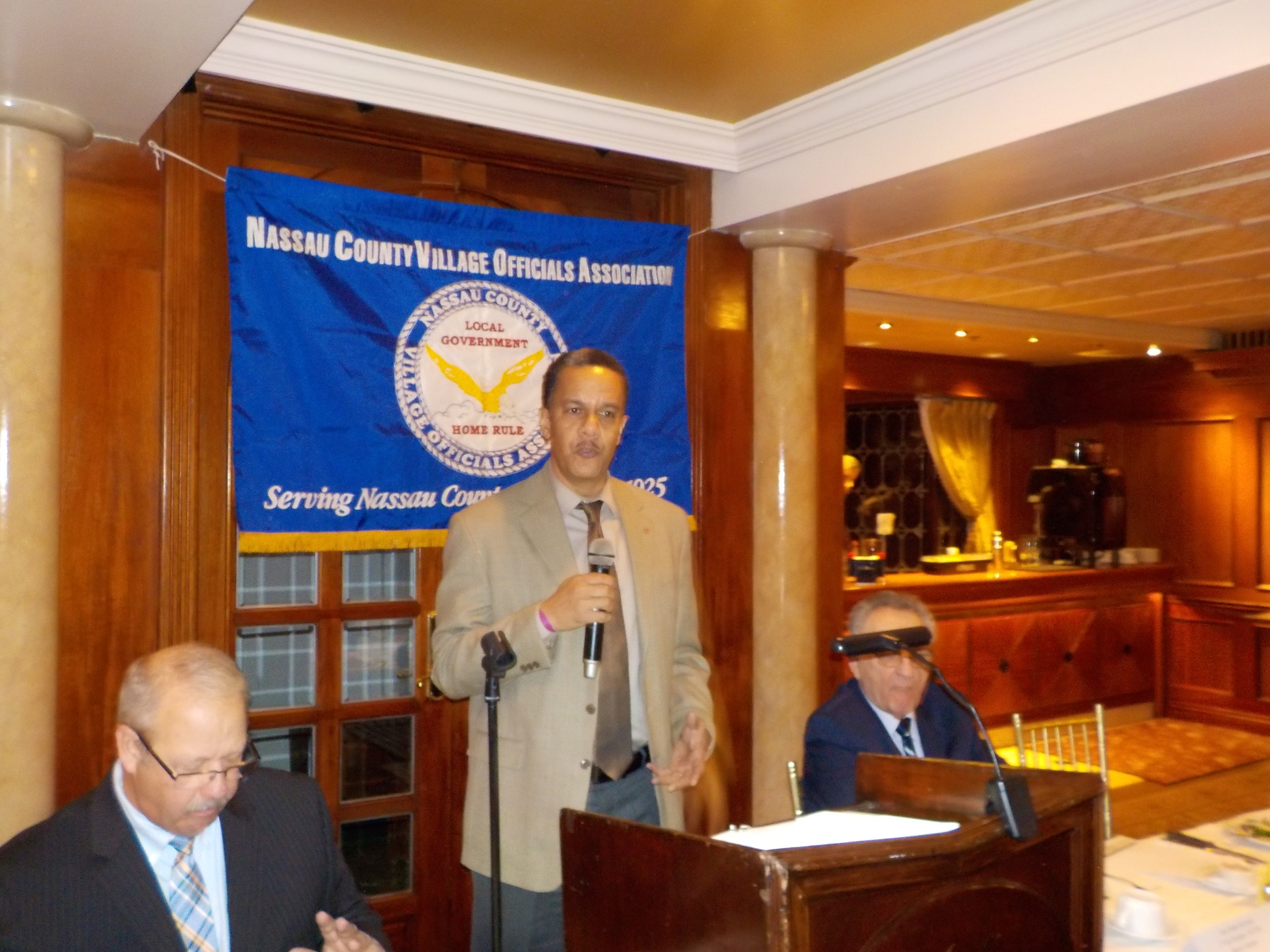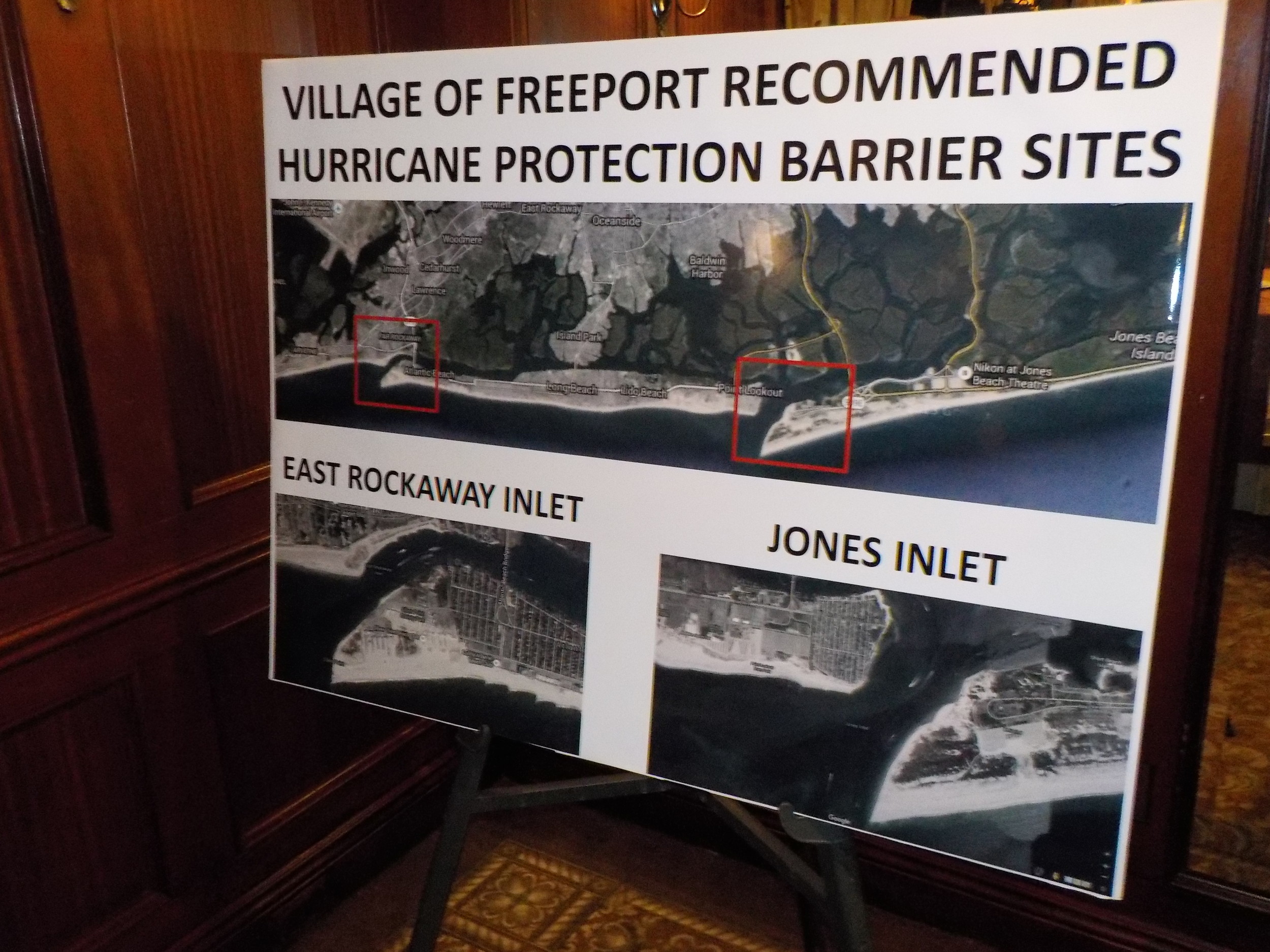Thursday, April 25, 2024
 47.0°,
Mostly Cloudy
47.0°,
Mostly Cloudy
Hurricane barrier feasibility study begins
Island Park continues storm protection efforts
Could large, movable storm “gates” protect local South Shore communities from catastrophic damage in future hurricanes?
Officials representing East Rockaway, Lynbrook, Freeport and Long Beach attended a Feb. 16 meeting of the Nassau County Village Officials Association to get an update on the possible construction of hurricane protection barriers to shield Nassau County’s waterfront communities from future storms.
A study to determine the viability of storm gates at the East Rockaway and Jones inlets has just begun, according to Clifford Jones, the chief of planning for the U.S. Army Corp of Engineers’ District of New York — the group tasked with the project. He added that the analysis would take about three years and cost roughly $3 million.
“If we don’t continue to fix the problems, or at least reduce the risk of the problems in the areas, then we’re going to lose the cohesiveness of our communities and lose that resiliency,” Jones told members of the association, which comprises elected officials from 64 villages in Nassau County, including Island Park.
The Army Corps of Engineers also wants to fortify the nine miles of the Long Beach barrier island between the East Rockaway Inlet and Jones Inlet, and another nine miles of coastal land between the Jones Inlet and the boundary of Massapequa and Amityville.
The barriers would consist of two swinging doors that close when seawater rises. They would be absorbent, and when filled, the doors would sink and become a massive barrier, Freeport Mayor Robert Kennedy explained. When the flooding receded, the gates would be opened. They usually remain open, but would close two hours before a predicted storm.
Kennedy stressed his belief in the effectiveness of such barriers, and cautioned that without quick action, future storms could create more devastation. “We’ve been passing this word around — resiliency — quite a bit recently, and that’s the ability to recover after setbacks,” he said. “I can assure you, there will be no recovery of the waterfront community on Long Island if we encounter another Superstorm Sandy in the near future.”
Kennedy said it was time to replace the word resiliency with prevention, and that without barriers, another storm could lead to more foreclosures, zombie homes and relocations. He noted that in 1964, a hurricane barrier was installed in Stamford Harbor, Conn., for $14.5 million, and that another was built in New Bedford and Fairhaven Harbor, in Mass., for $18.6 million. “They’ve been 100 percent effective,” he said.
The gates could also close during excessively high tides, Kennedy said. “It’s my opinion the quickest and most effective method to prevent another flood or the reoccurrence of another Sandy-type storm would be to restrict the ocean from infiltrating both of those inlets,” he said.
Though Island Park Mayor Michael McGinty said last week that he is unsure whether storm gates in the inlets would work, he added that his village has taken a variety of steps since Hurricane Sandy in October 2012.
“There are differences between then and now,” McGinty said. “We’re able to afford the village greater protection from storms and an ability to be more responsive to our citizens.”
All of Island Park’s drains have been cleaned over the last year, McGinty said, which was phase one of a series of hazard mitigation projects to be paid for by $40 million in grants provided by the Federal Emergency Management Agency and the New York Division of Homeland Security and Emergency Services.
The village expected to submit its next plans to the federal government on March 1, which includes design improvements of the drains on Radcliffe Road in conjunction with tidal flex valve replacement.
About 400 “troubled” trees were removed — to be replanted over time — 72 homes have been raised, and PSEG rewired the village with storm-resistant electric transmission lines, McGinty said.
“All of this stuff is all part of prevention,” McGinty said. “…Experience is a great way to start preparing even stronger and stronger.”
According to Kennedy, the federal government contributed $1.5 million to the hurricane barriers feasibility study, while New York state has provided $1 million and Nassau County has put in $500,000.
Jones said that his group has worked with various agencies to identify areas needing the most improvement, and that sometime in March the public would have a chance to comment.
“With that input, we’ll write up a project management plan,” he said, adding that it will also help determine a more rigid timeline for the study’s completion and total cost.
When it is completed, Jones said, the corps would have a better idea of whether the barriers are feasible. “Once we finish, if everybody’s on board with the plan itself, it has to be authorized and has to be funded,” he said. “There’s a lot of things that are going to go on before we start actually designing or doing anything with the barriers.”
HELP SUPPORT LOCAL JOURNALISM
The worldwide pandemic has threatened many of the businesses you rely on every day, but don’t let it take away your source for local news. Now more than ever, we need your help to ensure nothing but the best in hyperlocal community journalism comes straight to you. Consider supporting the Herald with a small donation. It can be a one-time, or a monthly contribution, to help ensure we’re here through this crisis. To donate or for more information, click here.
Sponsored content
Other items that may interest you







